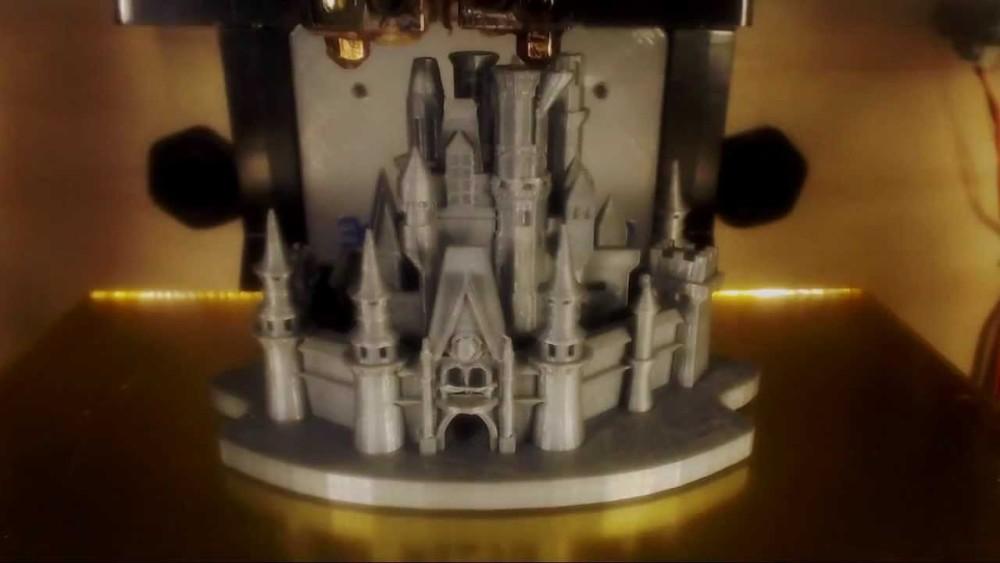 When you hear Disney you usually think theme parks, big budget movies, animated fairy tales and merchandise licensing deals that just won’t quit. But Disney didn’t become one of the biggest and most successful companies on the planet just by selling mouse ears. Other than an actual tech company there probably isn’t a business more interested in cutting edge technology than Disney. From their ground breaking research into robotics and how it can relate to animated characters to the software used to automate virtually all of their amusements parks and innovative manufacturing and distribution processes, Disney is always pushing the envelope when it comes to developing technology designed to make them money.
When you hear Disney you usually think theme parks, big budget movies, animated fairy tales and merchandise licensing deals that just won’t quit. But Disney didn’t become one of the biggest and most successful companies on the planet just by selling mouse ears. Other than an actual tech company there probably isn’t a business more interested in cutting edge technology than Disney. From their ground breaking research into robotics and how it can relate to animated characters to the software used to automate virtually all of their amusements parks and innovative manufacturing and distribution processes, Disney is always pushing the envelope when it comes to developing technology designed to make them money.
So when a company like that files for three new patents related to 3D printing on the same day you just have to wonder what exactly they’re up to. All three patents from Disney Enterprises, Inc. seem somewhat related, and even more curious, they all have the same inventors attached to the patents. Reading over the application text makes it sound as if they’re working on a way to use additive manufacturing technology in some pretty interesting new ways. Innovations like a build plate that can move and tilt in order to remove the need for support material on overhangs, a new method of using laser cured resin to 3D print and a process of 3D printing an object with identification elements embedded within the print all sound pretty interesting.
The first patent application filed was for Three Dimensional (3D) Printed Objects with Embedded Identification (ID) Elements. The patent is described as a 3D printing process that would limit unauthorized copying or allow any 3D printed objects to easily be authenticated. The process seems related to the 3D file more than any new technology and describes an ability to embed an identification element inside of the 3D file itself, so no matter which 3D printer the model is printed out on, the ID would be included. The ID element could be an RFID material printed directly into the 3D model, but it sounds more like Infrastructs, a method of 3D printing layers containing a pattern that could be detected by specialized equipment. Essentially, a pattern is printed inside of an object, and the gaps and holes, completely undetectable by you, would be detectable and identifiable. I’d imagine this would be something related to Disney selling 3D printable products and each 3D model containing an element that would identify the object as counterfeit.
Three Dimensional (3D) Printing by Volumetric Addition Through Selective Curing of a Fluid Matrix is clearly a new 3D printing process similar to stereolithography. Unlike SLA however it sounds like the technology uses two different directed energy beams, likely lasers, to solidify the resin. The patent includes a targeting system that is used to align the two independent energy beams. It sounds like instead of light being used to cure the resin material that it is the lasers themselves responsible. The heat generated when the two beams cross is what will cure the liquid material into a three-dimensional shape. The heat will be directed only at the specific point where the lasers collide, so this could be used to potentially produce some incredibly detailed 3D models.
And finally we have Three Dimensional (3D) Printer with a Build Plate Having Multi-Degree of Freedom Motion. Easily the most interesting of the patent applications, the detailed technology is a process that will allow 3D printers to print objects with severe overhangs without the need for any support structures. Essentially, the print bed moves based on the needs of the 3D model, so let’s say you want to print a large letter “F” instead of building support columns under the two overhanging parts of the letter, the print bed itself would tilt enough that the entire letter could be 3D printed, and the plastic material solidified, without any need for wasted material. The technology allows the print bed and the printing head to essentially be aware of each other and work together to 3D print a model.
All three patent applications from Disney Enterprises have the same four people listed as inventors, Jeffrey Voris, Benjamin Foster Christen, Jorge Alted and David W Crawford, all presumably employees of Disney. It is unclear exactly what they have planned for the technology, but my guess is either rapid prototyping for their in-house prop or fabrication shop, or perhaps Disney is planning to introduce customizable 3D printed souvenirs in their theme parks. The company already has extensive activity through Disney Research, and also licenses out Marvel IP to a company that will 3D print custom faces onto action figures, this could be an in-house alternative. But whatever it is, Disney has a plan, and I’m really curious what exactly it is. Discuss in the Disney 3D Printing Patents forum over at 3DPB.com.
Subscribe to Our Email Newsletter
Stay up-to-date on all the latest news from the 3D printing industry and receive information and offers from third party vendors.
Print Services
Upload your 3D Models and get them printed quickly and efficiently.
You May Also Like
3D Printing News Briefs, July 2, 2025: Copper Alloys, Defense Manufacturing, & More
We’re starting off with metals in today’s 3D Printing News Briefs, as Farsoon has unveiled a large-scale AM solution for copper alloys, and Meltio used its wire-laser metal solution to...
3DPOD 260: John Hart on VulcanForms, MIT, Desktop Metal and More
John Hart is a Professor at MIT; he´s also the director of the Laboratory for Manufacturing and Productivity as well as the director of the Center for Advanced Production Technologies....
3D Printing News Briefs, June 28, 2025: Defense Accelerator, Surgical Models, & More
In this weekend’s 3D Printing News Briefs, 3YOURMIND was selected to join an EU Defense Accelerator, and PTC has announced model-based definition (MBD) capabilities within Onshape. Finally, a study out...
EOS in India: AM’s Rising Star
EOS is doubling down on India. With a growing base of aerospace startups, new government policies, and a massive engineering workforce, India is quickly becoming one of the most important...




































